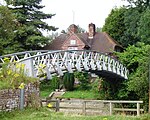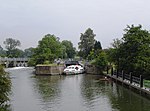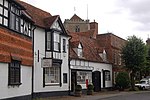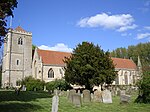Little Wittenham SSSI
Sites of Special Scientific Interest in OxfordshireSpecial Areas of Conservation in England

Little Wittenham SSSI is a 68.9-hectare (170-acre) biological Site of Special Scientific Interest north-east of Didcot in Oxfordshire. It is also a Special Area of Conservation.This site, which is managed by the Earth Trust, consists of woods, grassland, scrub and ponds on the slope of a hill next to the River Thames. Flora include the nationally scarce greater dodder, and there is a rich assemblage of amphibians, including one of the largest populations in the country of the great crested newt, which is a priority species of the Biodiversity action plan.
Excerpt from the Wikipedia article Little Wittenham SSSI (License: CC BY-SA 3.0, Authors, Images).Little Wittenham SSSI
Star Walk, South Oxfordshire Little Wittenham
Geographical coordinates (GPS) Address Nearby Places Show on map
Geographical coordinates (GPS)
| Latitude | Longitude |
|---|---|
| N 51.631 ° | E -1.175 ° |
Address
Star Walk
Star Walk
OX10 7JL South Oxfordshire, Little Wittenham
England, United Kingdom
Open on Google Maps










